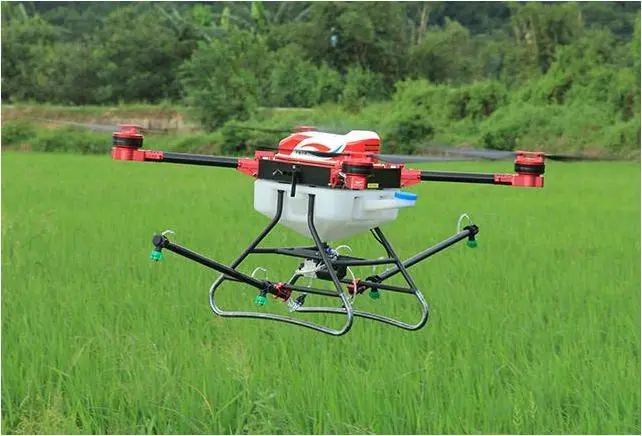On the banks of the Yulin River in the golden autumn of September, there are bursts of fruity fragrance wafting in. On the 2000 acre orchard slope in Qinglong Village, Dasheng Town, Yubei District, Chongqing, the branches of citrus forests such as Daya orange, Blood orange, and Wo orange are covered with green fruits, some of which have started to turn yellow. The citrus forest here is about to be harvested. But during this critical period before harvest, looking around, there was no one guarding the entire mountain.
In the office building of the Qinglong Village Committee not far from the hillside, the staff only need to lightly click the mouse, and all the information of this orchard, from planting scale to tree age, from soil environment to growth analysis, as well as external environmental data such as atmospheric temperature, humidity, and wind speed, will be displayed at a glance on the large screen.
Currently, intelligence is accelerating the empowerment of high-quality development in various industries in Chongqing. At the Smart Expo held in August this year, under the guidance of the Chongqing Agriculture and Rural Committee and led by the Information Institute of the Chongqing Academy of Agricultural Sciences, the “Unmanned Orchard Management Platform for Hilly Mountains” was released to the whole society. The 2000 acre orchard in Qinglong Village, which utilized this management platform, has become the first digital unmanned orchard in hilly and mountainous areas in China.
According to the relevant person in charge of the Agricultural and Rural Committee of Yubei District, Chongqing, the platform has achieved full data coverage, environmental monitoring 24/7, precise management and protection throughout the entire process, and agricultural machinery collaboration is fully automated. At the same time, relying on technologies such as intelligent sensing, pattern recognition, and automatic obstacle avoidance, combined with three-dimensional precise digital maps, efficient collaboration between intelligent agricultural machinery such as unmanned target spraying robots, unmanned weeding robots, and unmanned harvesting robots is achieved, achieving interconnectivity, operation planning, and unified scheduling of agricultural machinery data, thus enabling large-scale, high-precision, and high-efficiency autonomous operations.
The biggest difference from traditional orchards is that in this’ future orchard ‘, many sensor devices can be seen. For example, a “microclimate monitoring station” built on the mountainside is mainly used to monitor information such as high temperature, humidity, wind speed, wind direction, real-time rainfall, cumulative rainfall, and light intensity within the park. Chen Mingfang, the first secretary of Qinglong Village, introduced that the “Microclimate Monitoring Station” collects microclimate data information within the park, providing basic information for citrus production and excellent variety cultivation, facilitating the management of the park by planting personnel and technical personnel. At the same time, combined with weather warnings on the system end, it achieves “knowing climate information early and preparing production operations”.
Compared to traditional agriculture that relies on nature for food, smart agriculture can still achieve unpredictability, “Chen Mingfang said. According to her introduction, the “Unmanned Orchard Management Platform for Hilly and Mountainous Areas” comprehensively integrates 3D model data, environmental data, crop physiological data, plot attribute data, intelligent agricultural machinery data, etc. It accurately depicts a 2000 acre orchard and six major fruit tree varieties. For each space, it intelligently obtains data information such as planting scale and number of fruit trees, and then overlays attribute information such as the age of fruit trees on the plot, The yield of each tree’s fruit can be predicted in advance to achieve three-dimensional orchard data aggregation and generalization.
In addition, the platform also achieves precise management and protection throughout the entire process. Through remote sensing feature spectral analysis, integrating fruit tree growth models and expert experience knowledge, AI diagnosis of fruit tree growth was carried out in 10 crop growth stages, from the “semi dormant stage” to the “fruit coloring stage”, for 6 major fruit tree categories such as Daya citrus, blood orange, and Wo citrus. This guided management measures such as fruit tree fertilizer and water management, disease and pest control, and achieved precise management of the entire process through stages, specialization, and strategy.
At the Smart Agriculture Summit Forum held at this year’s Smart Agriculture Expo, Professor Li Daoliang, Dean of the International College of China Agricultural University and Director of the National Digital Fisheries Innovation Center, predicted that unmanned farms will be the future development trend. What is an unmanned farm? It means that all agricultural operations are completed by machines without people entering the farm. This machine also needs to be supported by some key common technologies, including the Internet of Things, big data, robots, etc., “Li Daoliang believes.







Please sign in to comment
register